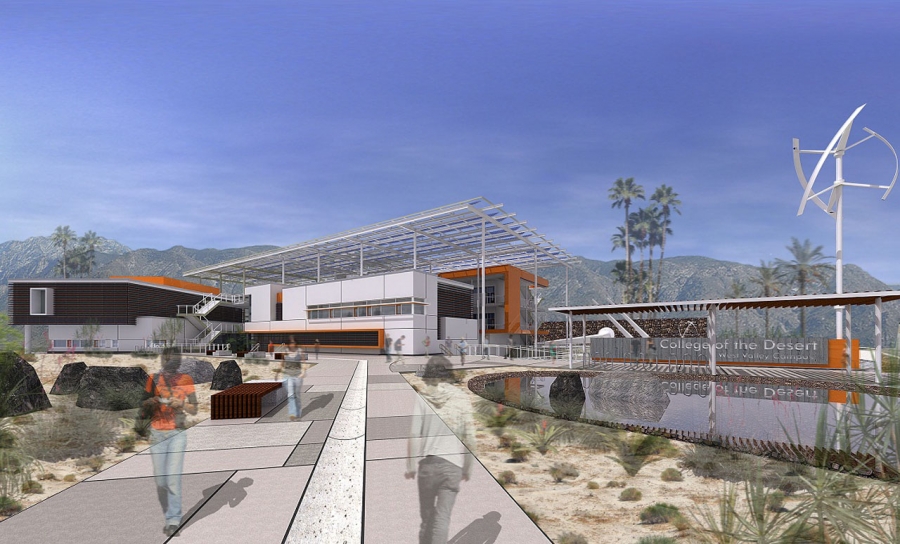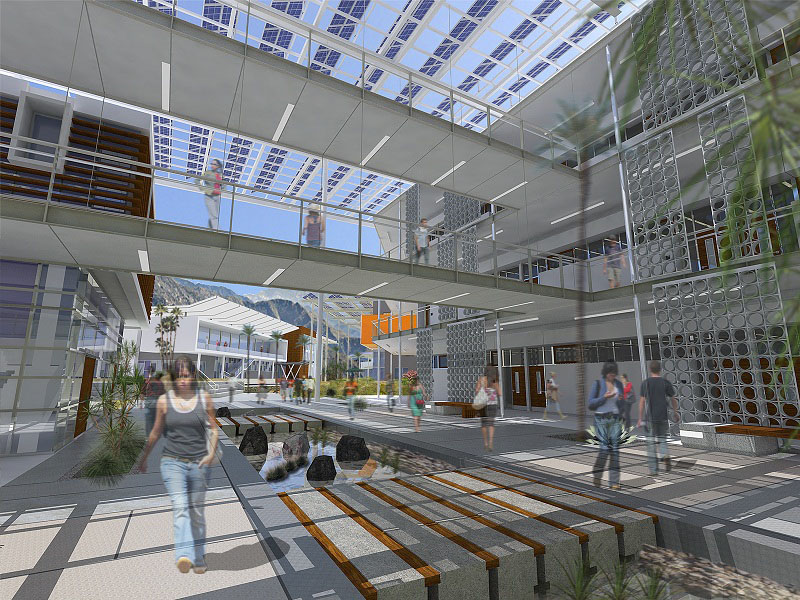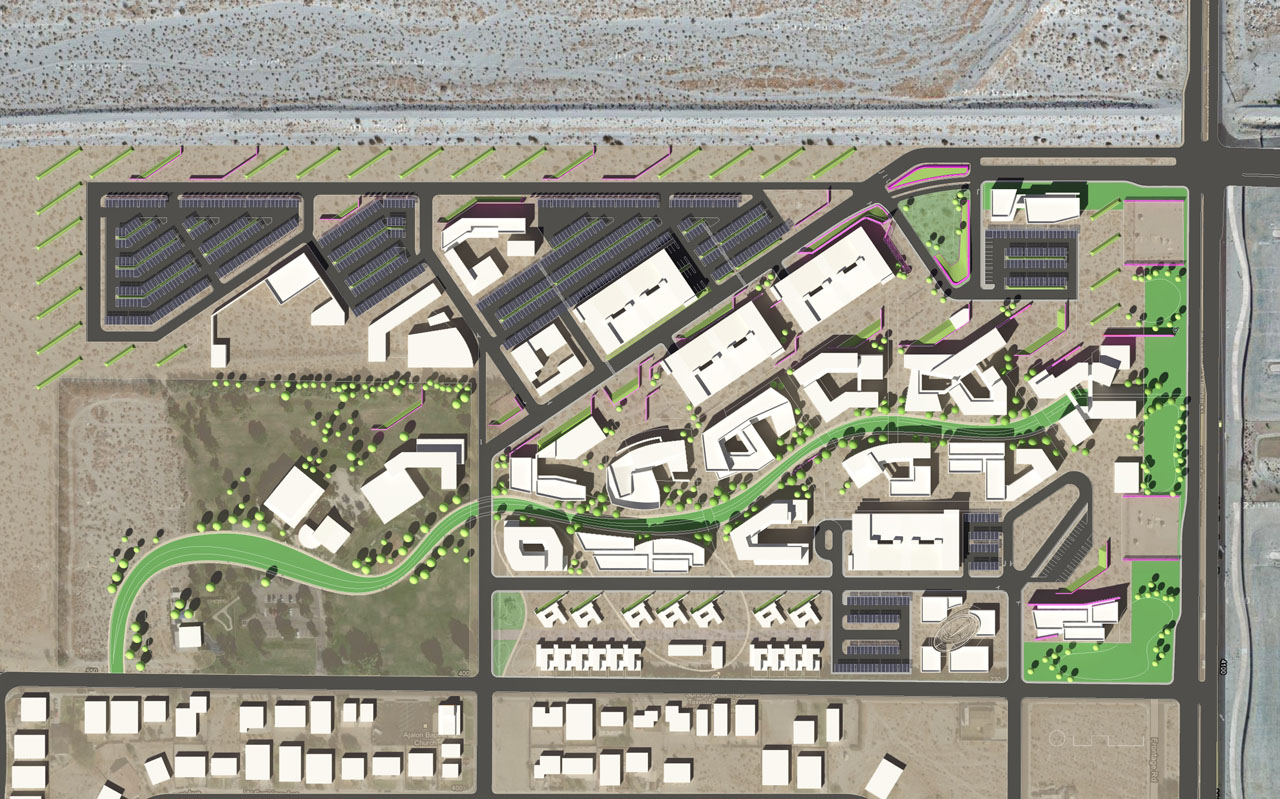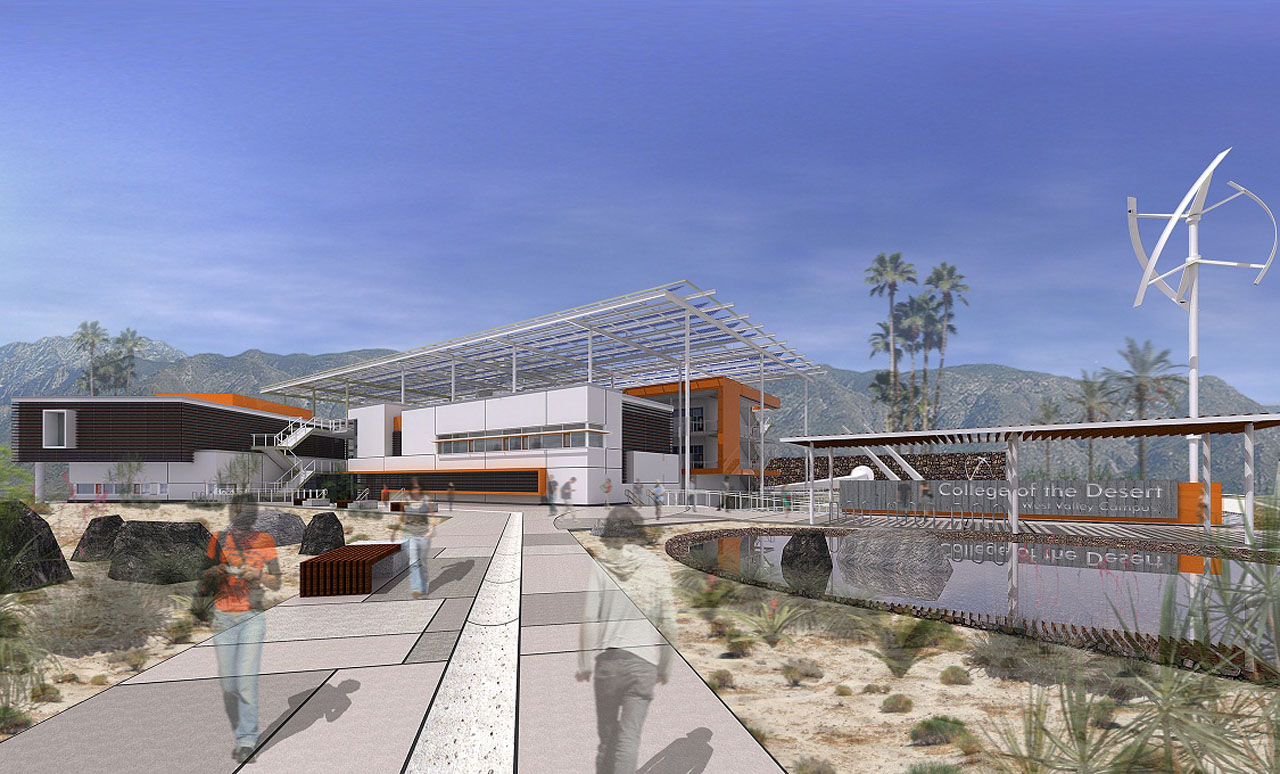College of the Desert's Tabula Rasa: The New West Valley Campus
Currently, the intersection of Tramview Road and Indian Canyon Drive is a quiet spot in the midst of the southern California desert, located just north of Palm Springs. However, the expanse of land on its northwest corner is soon to be the home of the College of the Desert’s Palm Springs West Valley Campus, and, once built, it should represent groundbreaking territory for sustainable planning and design.

Last fall, the City of Palm Springs procured the 119-acre site and transferred it to the Desert Community College District. Describing the new West Valley Campus as a tabula rasa, or “clean slate,” the College of the Desert hopes to incorporate sustainability not only at the building level but on the scale of land use and in community integration. Cutting-edge economic and business models are also being implemented.
“The opportunities are endless with this empty piece of land,” says James Matson, VP and Director of the L.A. office of HGA Architects and Engineers (HGA). “The college administrators have been very progressive in their thinking.”
HGA will be directing master planning, programming, design, and sustainability of the campus, which will be completed in seven phases. Construction on the first phase is expected to begin in 2012 and will consist of 50,000 sq. ft. of classroom, laboratory, and office space organized around a central shaded courtyard. The campus plans to open its doors after Phase I is completed, in the fall of 2014. Later phases of campus development will push westward on the site and wrap around the existing James O. Jessie Desert Highland Unity Center, helping to tie the college into the existing community.
Integrating into the Business World
The sustainability goals set for the campus continue to push the conceptual envelope of what is possible. Going beyond net-zero energy usage, the campus is implementing a Zero-Plus plan. The College of the Desert has partnered with Southern California Edison (SCE) to construct and operate GreenPark, a 60-acre solar farm that will be adjacent to the 59-acre campus proper. The GreenPark lease will not only provide for the college’s energy needs but will create a revenue stream that assists in the development of college programs and services. SCE will benefit from using the site for controlled research and development, as well as for alternative energy training programs.

Other types of public/private ventures (PPVs) will also be utilized in the operation of the West Valley Campus. In addition to its 420,000 sq. ft. of academic space, the campus will have 230,000 sq. ft. of leasable area, including incubator space for small business start-ups. Community colleges increasingly find themselves playing host to small businesses in order to boost local economic development; an article by the American Association of Community Colleges states that close to 35 business incubators are operated by two-year colleges nationwide. For a college, the benefits of PPVs include not only revenues but job training for the student population. At the Palm Springs West Valley Campus, business development will center around four "pillars': hospitality and tourism, media and the arts, allied health, and sustainability technology.
Designing for PPVs added a new ingredient into the overall planning of the campus, especially since the types of services to be provided are diverse. “There is a possibility, even, of a small hotel or an eco-resort,” says Matson. “We needed to be sure to create spaces that were suitable for tenants and provide things like separate energy meters."
Integrating into the Natural World
To optimize the campus’s environmental performance, HGA drew inspiration from the growing field of biomimicry. Matson explains that architectural elements are used across the campus to create microclimates, mimicking, for example, the way rows of trees offer wind protection. “We were able to slow the wind with perforated barriers – fences, trees, and such. Wind and blowing sand were big drivers of the design. We oriented the buildings perpendicular to the wind direction.” Perforated metal panels are another architectural feature that offer shade and allow the permeation of gentle breezes while blocking high winds. These panels fit well aesthetically with the mid-century modern building style that is characteristic of Palm Springs, too – a fitting gesture, since the completed campus will act as a gateway to the city.

Further inspiration was taken from the way leaves on a tree collect and store energy. "Our PV panels mimic this. And, like leaves, the panels act as shading devices for the courtyard,” says Matson.
A desert landscape feature that will serve as an organizing device for the campus is a manmade arroyo, or dry river bed. “We created this to pay homage to the arroyo,” says Matson. “It will collect water and direct it to a retention pond, where it can percolate back into the ground.” Some of the water will be captured and stored for irrigation, a meaningful form of reuse since access to water is one of the biggest challenges for a desert location.
Making the most use of indoor and outdoor spaces is how Matson describes the overall goal of HGA’s design. Whether one considers the environmental model or the economic model that the campus will implement, the College of The Desert is proving its ability to find creative ways of optimizing space.


Kristin Dispenza
Kristin graduated from The Ohio State University in 1988 with a B.S. in architecture and a minor in English literature. Afterward, she moved to Seattle, Washington, and began to work as a freelance design journalist, having regular assignments with Seattle’s Daily Journal of Commerce.
After returning to Ohio in 1995, her freelance activities expanded to include writing for trade publications and websites, as well as other forms of electronic media. In 2011, Kristin became the managing editor for Buildipedia.com.
Kristin has been a features writer for Buildipedia.com since January 2010. Some of her articles include:

